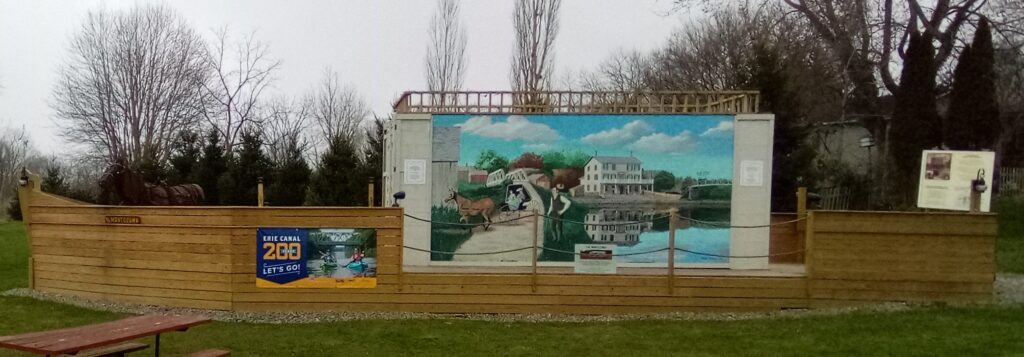
Replica: the Montezuma
This year is the 200th anniversary of the official opening of the original Erie Canal. On October 26, 1825 New York Governor DeWitt Clinton boarded the packet boat Seneca Chief in Buffalo at the western terminus of the canal. The governor and an entourage consisting of several other canal boats traveled the entire length of the canal to Albany, where the Erie met the Hudson River. A steamboat towed the Seneca Chief down the Hudson to New York City. On November 5th Governor Clinton poured Lake Erie water into the Atlantic Ocean for the ceremonial Wedding of the Waters.
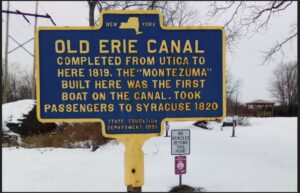
at the Montezuma Heritage Park
But people were traveling on the canal long before the official opening. According to a historical marker in Montezuma, the middle section of the canal was completed in 1819. A canal boat traveled from Montezuma to Syracuse in 1820. In its May 30, 1820 issue, the Edwardsville Spectator in Illinois published a report (page 3):
Grand Canal.—The Onondaga Register, of April 25th announces the arrival at Syracuse, (Salina) of the Canal barge Montezuma—she has two commodious cabins, with a kitchen—is 76 feet long and 15 wide. At Syracuse a party of ladies and gentlemen amounting to 100 persons went on board of her, when she started for Salina, a distance of one mile and a half, which she performed in 22 minutes. On her return to Syracuse 150 persons were on board. The shores of the Canal was lined with spectators, who manifested the greatest joy at her success. At the rate the boat travelled, it is computed that one horse will convey 100 persons at the rate of 3½ or 4 miles per hour. The water in the canal was two and an half feet deep—the barge drew but twelve inches of water, notwithstanding she was heavily laden. The distance from Utica to Montezuma, 94 miles, is now navigable. The canal boat Chief Engineer has performed the whole route.

Chief Engineer

Middle section completed first
You can read more about the Montezuma’s first trip on April 20th to a very young Syracuse at syracuse.com. Apparently, 4 mph wasn’t the speed limit on the canal. The packet boat arrived late because of a delay when a team of fast horses was hooked up to it. The horses arrived at a full trot, “kicking up a wake that soaked many of the onlookers.” Comfort Tyler, who built the Montezuma purchased The Chief Engineer (along with Simon Dexter Newton). The two boats began a regular service between Montezuma and Utica. The Erie Canal Museum provides more information about the canal in 1820 – other boats also started using the middle section of the canal in 1820.
200 years ago a famous visitor also traveled on the Erie Canal before its official opening. During his 1824-1825 grand tour of the United States the Marquis de Lafayette rode on the canal for much of his trip from western New York State to Albany on his journey to Boston for the 50 year commemoration of the Battle of Bunker Hill. Lafayette was feted at many places on his journey, but he to keep moving to make it to Boston in time. In Buffalo he had a reunion with the famous Native-American Red Jacket. The general and his entourage went by land from Rochester to Syracuse by detouring through the northern part of some of the Finger Lakes. This past Saturday Auburn, New York celebrated Lafayette’s June 8, 1825 visit and the new historical marker commemorating it. You can read an account of Lafayette’s journey off and on the Erie Canal in Auguste Levasseur’s 1829 Lafayette in America in 1824 and 1825, Vol. 2 at Project Gutenberg (Chapter XII).
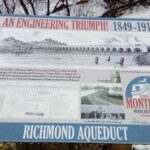
canal boats travel over the Seneca River

Richmond Aqueduct remains
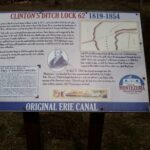
Ditch marker
I took the other photos in this post during the first few months of 2025 at The Montezuma Heritage Park. The park features the remains of the Richmond Aqueduct built during the Erie Canal’s “first enlargement,” but there are other interesting sites throughout the park, including a portion of the original ditch. The Montezuma Park’s webpage includes three virtual tours of the park with historian Mike Riley. The Erie Canal provides lots of information and includes more about the Montezuma Aqueduct.
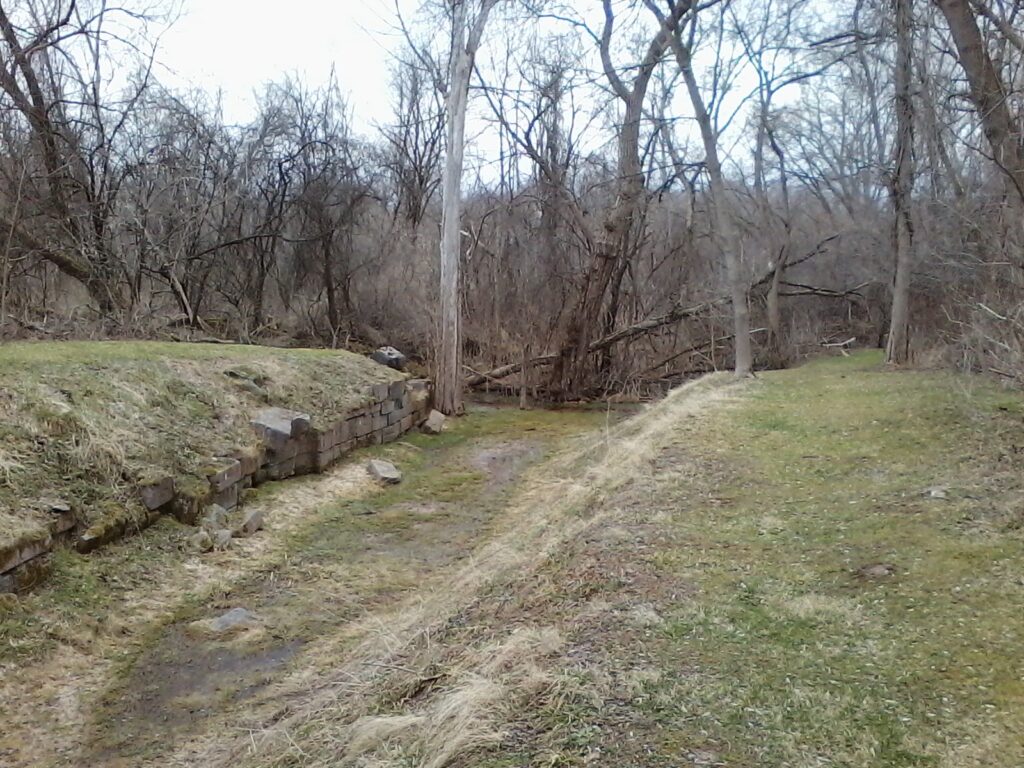
Remnant: The Grand Canal (or Clinton’s Ditch)








